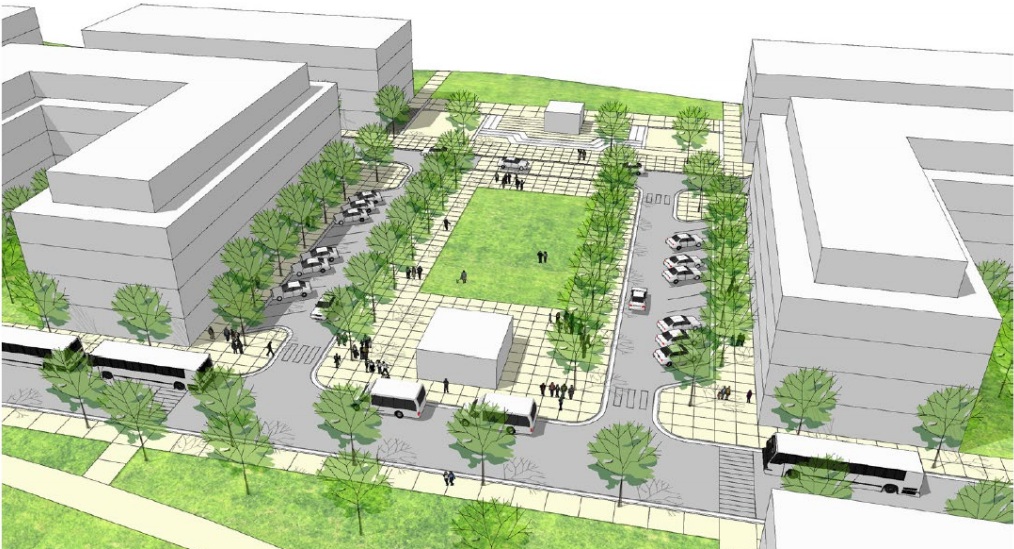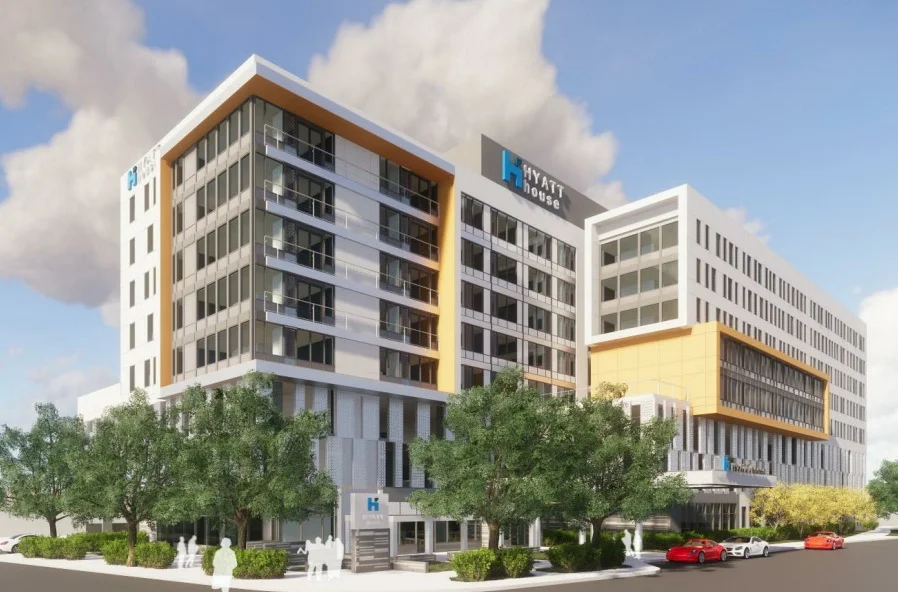Graham Park, Mayo West Lot selected as sites for future 'transit villages'
Efforts to modernize Rochester’s transportation system took a giant leap forward on Tuesday as the Destination Medical Center Corporation Board approved the sites of future mobility hubs outside of the downtown.
“We have done a major, major thing here today,” said R.T. Rybak, chair of the DMC Corporation Board. “We are moving forward on transportation.”
At the recommendation of the city, the board voted to pursue two sites that could be used for mobility hubs: Graham Park just south of downtown and the Mayo Clinic West Parking Lot near Cascade Lake.
With both locations, officials believe there is opportunity to connect the mobility hubs to more comprehensive plans for their respective sites. For starters, Graham Park and Cascade Lake each have redevelopment projects in the works — meaning there is a potential to think about the hubs as catalysts for future economic development in their areas.
“We imagine these as full development opportunities,” said Patrick Seeb, director of economic development and placemaking for DMC.
More than park-and-rides, which provide transit service only during peak commuter periods, the mobility hubs are being designed to be what DMC leaders call “transit villages.” Plans presented Tuesday show the villages encompassing affordable housing, public amenities and commercial development — along with ample amounts of parking.
Nick Campion, the city council representative on the board, said Tuesday that a key to making transit hubs a success will be creating the right incentive package to entice developers to invest in a city project.
“I think the parking is really big, but if we don’t have the commercial, we don’t have the residential [development] to get that critical mass at the site, this is going to be a really remote parking ramp — and that I think will be a failure of the concept of a village,” said Campion.
In approving the mobility sites, the city is now able to move forward with the engineering work needed to submit a funding application to the federal government. DMC plans to use a combination of sources — federal, state and local — to cover the costs associated with the transit build-out.
While no timeline was given, city leaders are eager to get the wheels turning on what has been a top priority for DMC. Rochester expects to double its workforce downtown by 2040 and without an efficient mode of transit, the already-high demand for parking will burst at the seams.
As part of its Integrated Transit Studies, which were approved last year, the city projected that it will eventually need about 30 percent of downtown commuters to use transit service. Right now, that number is 10 percent.
Graphic courtesy DMC
To reduce the dependency on vehicular traffic, the city plans to use a multi-modal approach that will combine improved bicycling infrastructure, more park-and-rides, and the introduction of bus rapid transit.
The bus rapid transit system will be what serves the mobility hubs. According to the plans, each hub will anchor a circulator route connecting riders with key destinations for employment, entertainment and housing.
“While it is intended to serve people who drive in and park — that’s one of the audiences it will serve — it will also serve for people who can walk or bike to the location and use the transit,” said Seeb.
Rochester Mayor Kim Norton said timing will be vital to ensuring the implementation goes smoothly. She stressed the importance of considering the effects different services have on each other. For instance, if parking spaces are taken away before transit reaches its potential, then it could ultimately dissuade people from coming downtown.
“We have to think very concretely about how is this going to impact citizens using our current facilities now,” said Norton.
Once built, the mobility hubs could have about 6,000 combined parking stalls. Current plans call for service every 10 minutes, 18 hours a day.
While there is no cost estimate to report at this point, the DMCC board did make a request Tuesday to have the proposed mobility hub locations added to the official DMC district. Doing so would allow the city to apply DMC-designated state funds to the development of the transit sites.
Follow Sean on Twitter.
Cover graphic: Rendering shows what a mobility hub may look like








